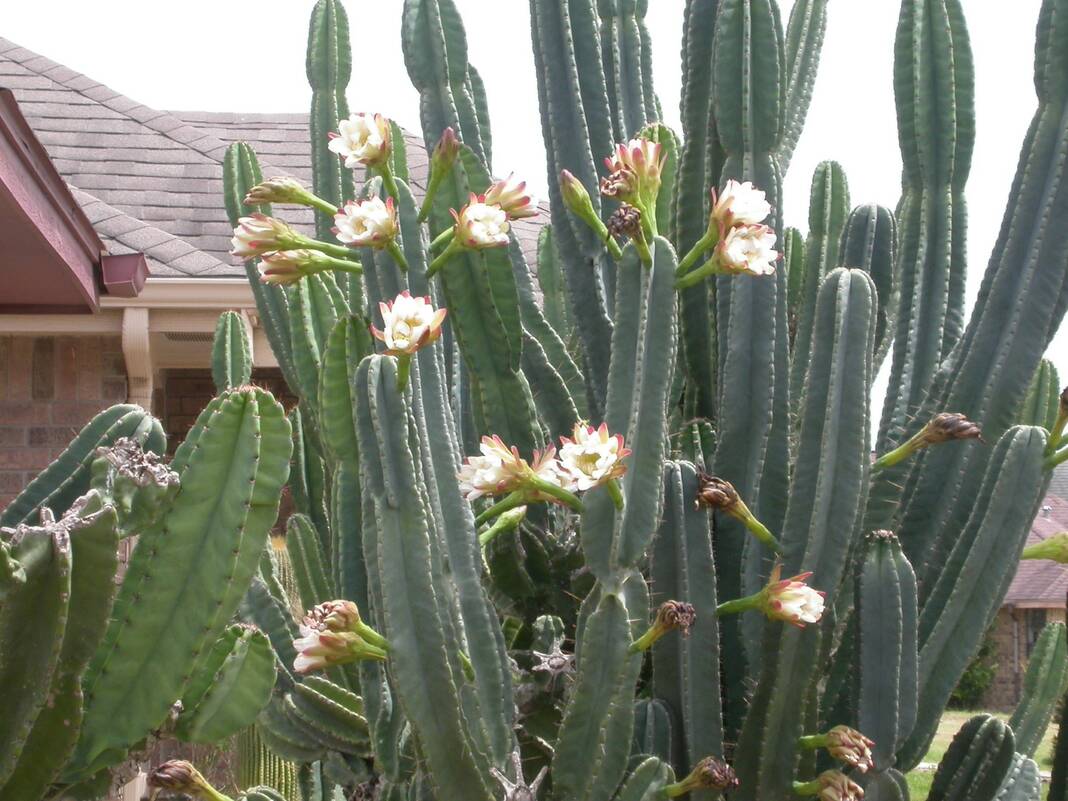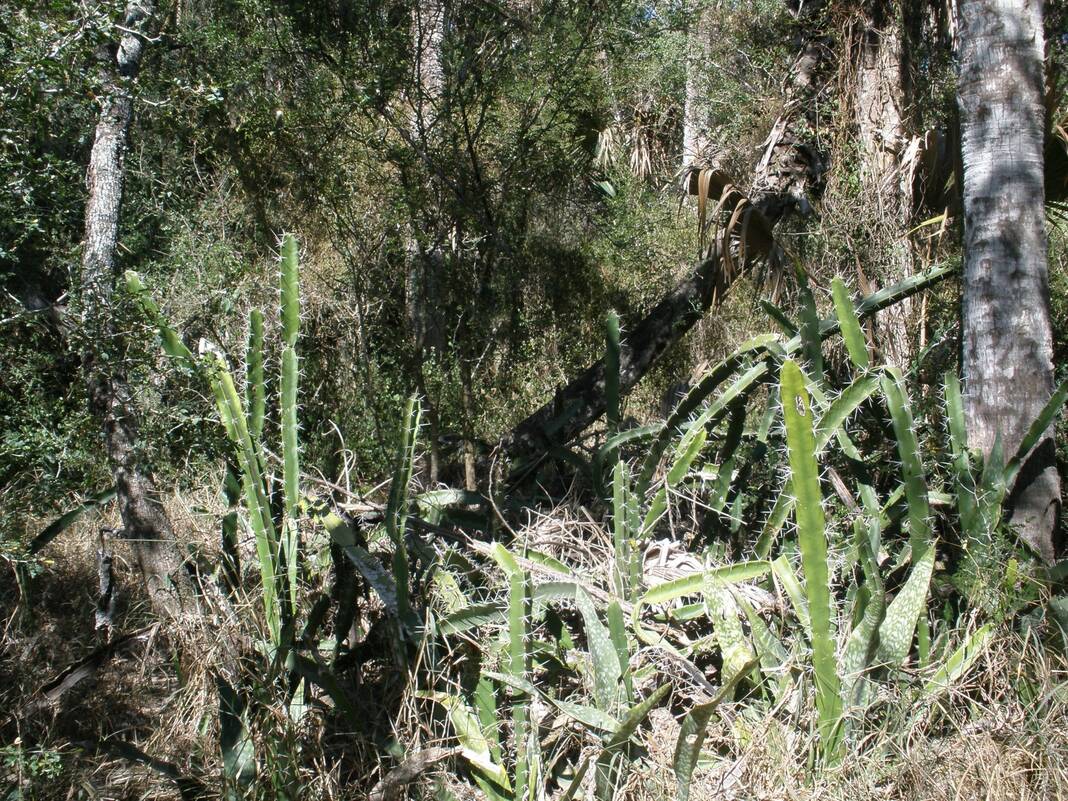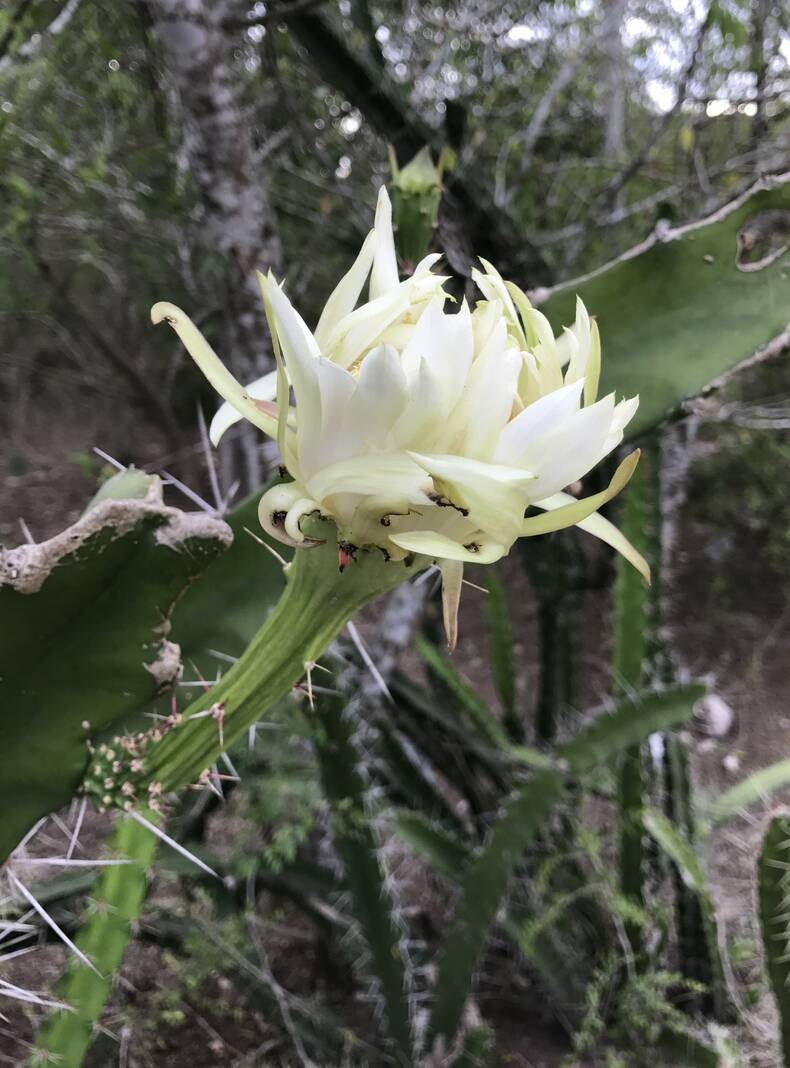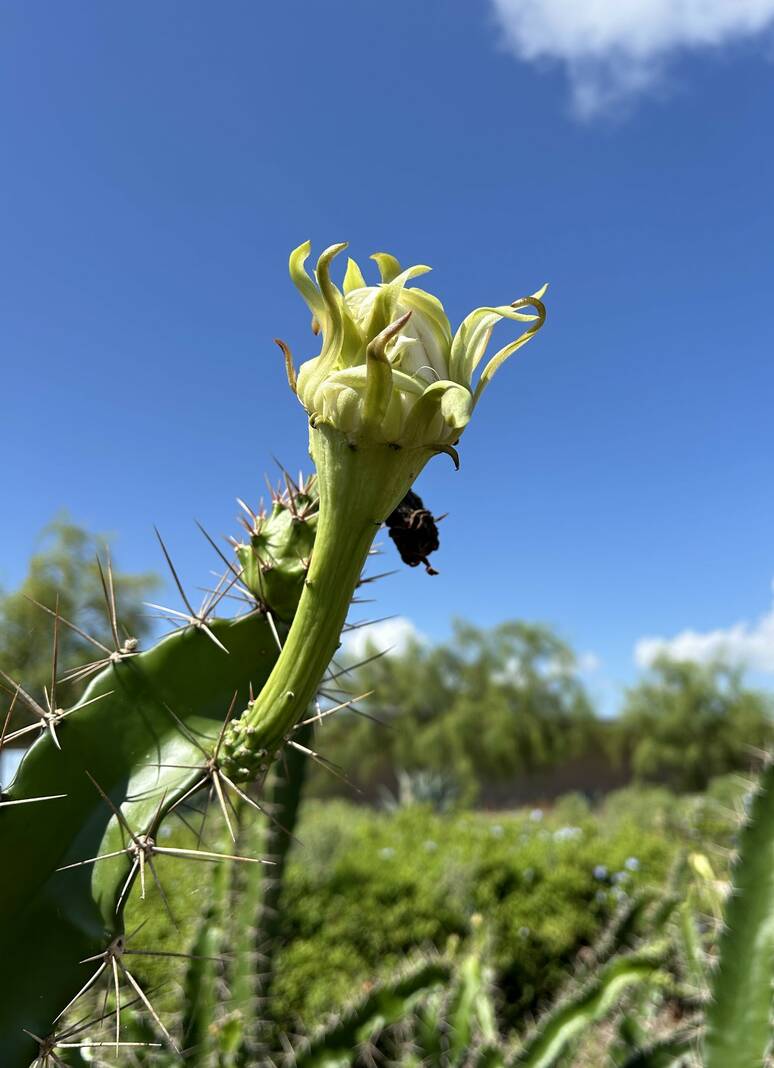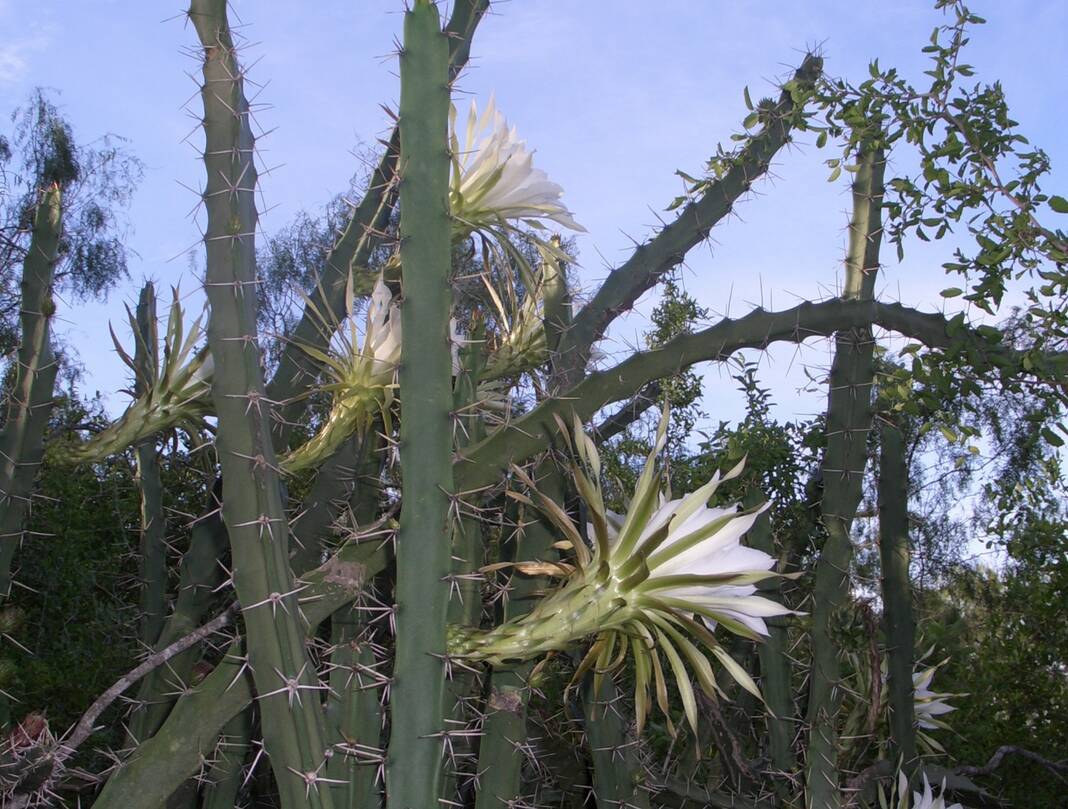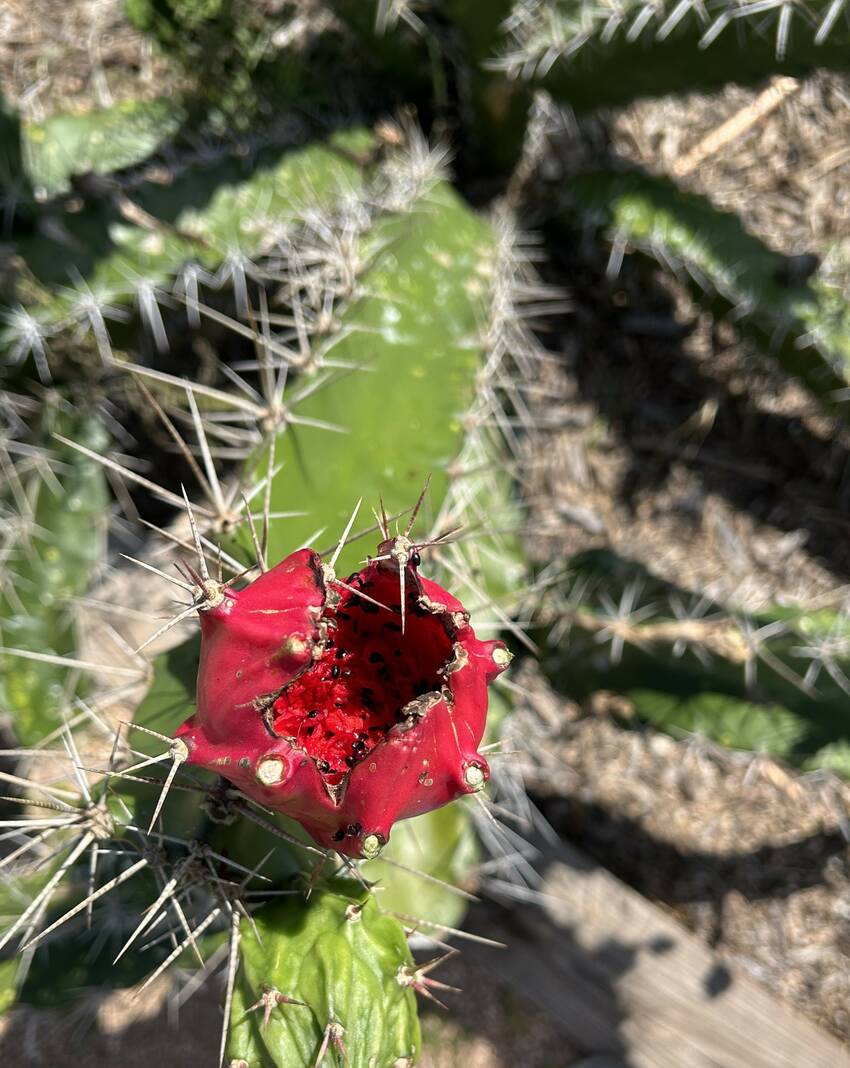|
Only have a minute? Listen instead
Getting your Trinity Audio player ready...
|
Night blooming cereus is the common name that refers to many flowering cacti that bloom at night, have columnar or elongated growth with well-defined ribs. The word cereus means that the plant is a cactus.
Flowers of night blooming cacti are generally white, or quite pale shades of a color, like pink, yellow or lavender; blooms are often large, from six to nine inches in diameter when open and fragrant. Blooms begin opening around 9 p.m., become fully open about midnight and begin wilting by dawn.
Night blooming cacti are tropical; they are perennial where they grow native. Bats in their region are the native pollinators; they visit the flowers after midnight when they are open at their fullest. Hawk moths and sphinx moths, as well as bees and beetles can also pollinate night blooming cacti. Not all of the night blooming cacti bear fruit.
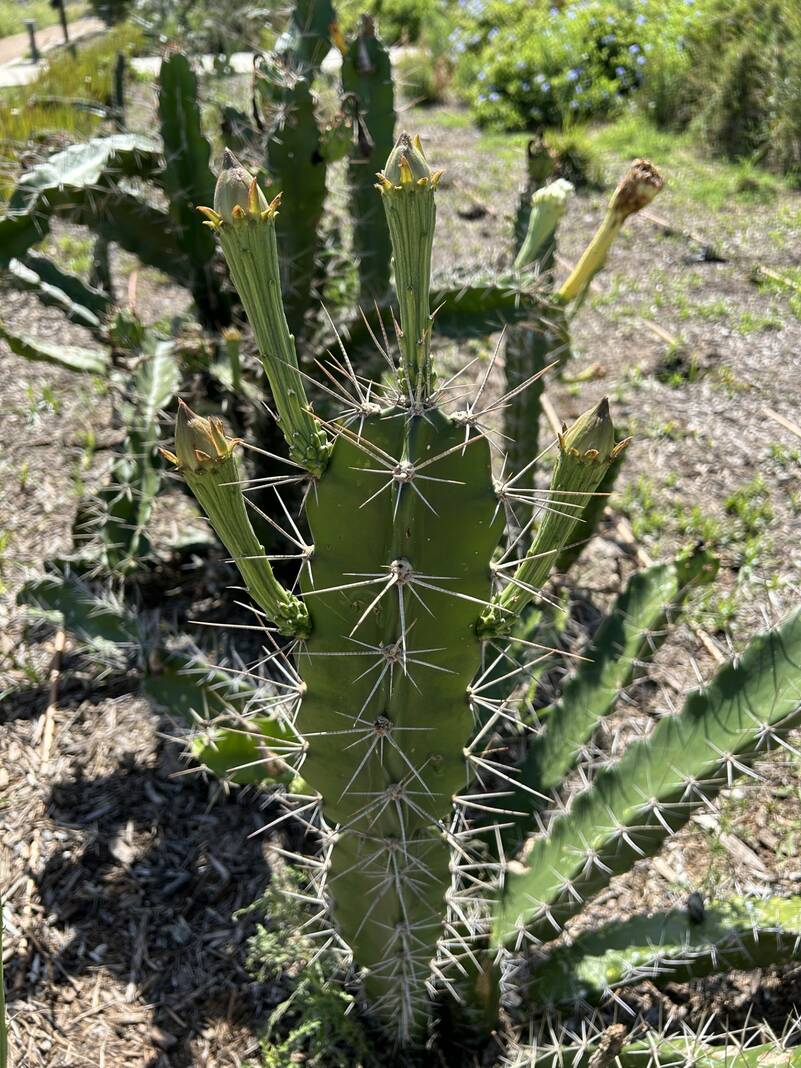
Triangle cactus Acanthocereus tetragonus, is a species native to the Lower Rio Grande Valley and to Florida and south to Mexico, Central America, the Caribbean and northern South America. Its flowers are five and one-half to nearly eight inches in diameter when fully open, with a tube up to six inches in length.
The plant is relatively fast growing for a cactus. Stems can appear spindly and sprawling, they arch and recline and travel over other vegetation. The plant forms branches and produces numerous smaller offsets; it is capable of forming thickets that can become impenetrable.
Triangle cactus is highly spiny. The areoles are gray. In botany, areoles are small light to dark colored bumps on cacti, out of which grow clusters of spines. Triangle cactus has seven to eight spines in each cluster; the spines can be one to one and one-half inches long.
Triangle cactus bears red, roundish three-inch fruits that have shiny black seeds. Birds, tortoises and coyotes feast on the ripe fruit. Rats and rabbits will eat the cactus stems.
The plant blooms June through September, pollinated by hawk moths, some sphinx moths and bats. Triangle cactus grows along the trails and paths in many of our local nature parks, but the gates will most likely be locked if you’re looking to view the spectacular midnight blooms.
The good news is, there is a place where blooms may be viewed, for those night owls amongst us — at the South Texas Ecotourism Center in Laguna Vista, along Texas state highway 100. The center has a special section of triangle cactus in their pollinator garden adjacent to the parking lot, in the open forecourt in front of the visitor center building. Take your flashlight, keep to the paths and have your phone camera ready.
Other night blooming cereus have prospered in the Rio Grande Valley, such as giant red dragon apple cactus (queen of the night), Harrisia bonplandii. It is native to Paraguay, Argentina and Bolivia. About three dozen have been recorded on www.iNaturalist.org in Hidalgo County. Andes Organ Pipe Cactus, Cereus hildmannianus, native to southern South America, grows tree-like to 30 feet in height; it has been documented locally. Night blooming orchid cacti in the Epiphyllum Genus make successful potted patio plants.
These sources were helpful in writing this article: iNaturalist.org, Wikipedia.org, assessment report at plantpono.org, nativeplantproject.com and Richardson, A. & King, K. (2011). Plants of Deep South Texas: A Field Guide to the Woody and Flowering Species. Texas A&M University Press, College Station, TX.
Anita Westervelt is a Texas Master Naturalist.

